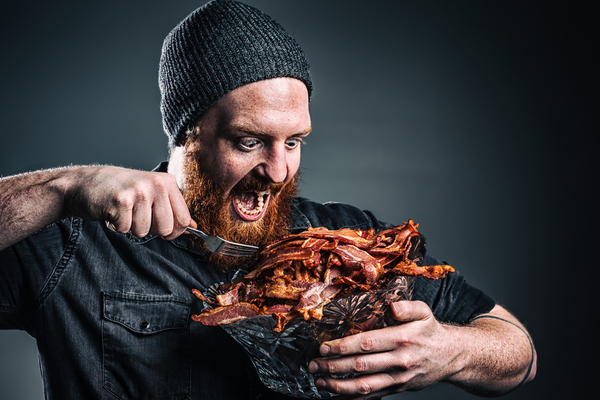International Bacon Day is celebrated in America on the Saturday before Labor Day, which in 2021 means September 4th. You may be saying, hey, isn’t there a Bacon Day in January, February, August, and even December? You’d be right, however, these dates are for “National” Bacon Day and do vary widely from location to location. While there is much debate about the proper date to celebrate, we can all agree that bacon deserves to be lauded no matter when, because when it comes down to it, nobody needs a reason to eat bacon. Bacon makes everything better.
So, what exactly IS bacon? Salty, fatty, crispy, chewy perfection. That is what bacon is. Bacon actually comes in a few different forms, however, at its core, bacon is pork meat cured/preserved in a solution or rub of curing salts, salt, and sugar, then (most often) smoked before it is taken home for consumption.
There are two main types of bacon that you think of when you talk about bacon.
Side Bacon – comes from the side and belly of a pig. It’s characterized by long striations of fat that run parallel to the skin. The ideal ratio of fat to meat in this form of bacon is usually ½ to 2/3 fat to meat.
Back Bacon – known also as “Canadian Bacon” and “peameal bacon” which is leaner, usually rolled in cornmeal, has a more ham-like texture, and comes from the loin meat of a pig.
Other common bacon terms include:
Gammon – a side of bacon
Rasher – slice(s) of bacon
English bacon – pork that has been cured to resemble side bacon, however features a larger loin slice on one end
The world’s obsession with bacon began at least 10,000 years ago when wild pigs were domesticated in Asia in 8,000 BC. Cured pig meat made it from there to the Roman Empire where it was an immediate hit named Petaso. Popularity was due to the fact that it was easy to cook and incredibly inexpensive.
From the Roman Empire, bacon made its way to Germany where it was known as Bakkon, Netherlands and Belgium where it was known as Baken, France where it became Bacun, which then evolved to Bacoun, and from there it became the English Bacon that we know and love today.
“Bring home the bacon” was a term that was coined in the 12th century when the church promised a side of bacon to any man who could swear to the congregation that he did not quarrel with his wife for a year and a day. Men who could boast this became highly revered in the community. Funnily enough this phrase has nothing to do with wages, however, the meaning has been altered through the ages to become synonymous with earning a living and not the absence of fighting with your wife.
Christopher Columbus brought pigs with him to Cuba, and in 1539 Hernando de Soto also brought 13 pigs with him to what is now the United States. That herd became 700 strong within 3 years. The natives of the area immediately fell in love with the pork products and readily accepted pigs and bacon as gifts or offerings of peace.
For the most part, bacon was made either at home or by the butcher and everyone had their own special recipe. However, in 1924, Oscar Meyer received the patent on packaged sliced bacon, shaping it into what we know today as the bacon on the grocery shelves.
The easiest thing you can do to celebrate this auspicious event would be to incorporate a little bacon into everything on the menu. Or perhaps host a bacon-tastic event! However you decide to do it, bacon the day away! #InternationalBaconDay
—
Photo Credit: Alan Sheldon / Shutterstock.com
